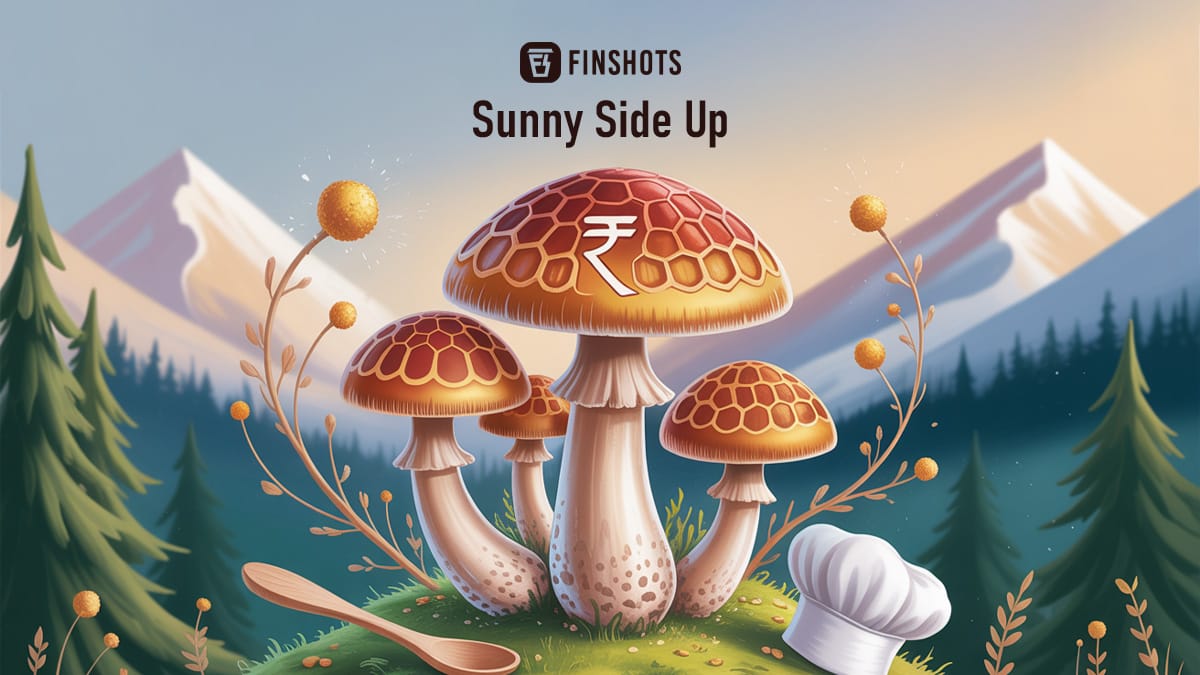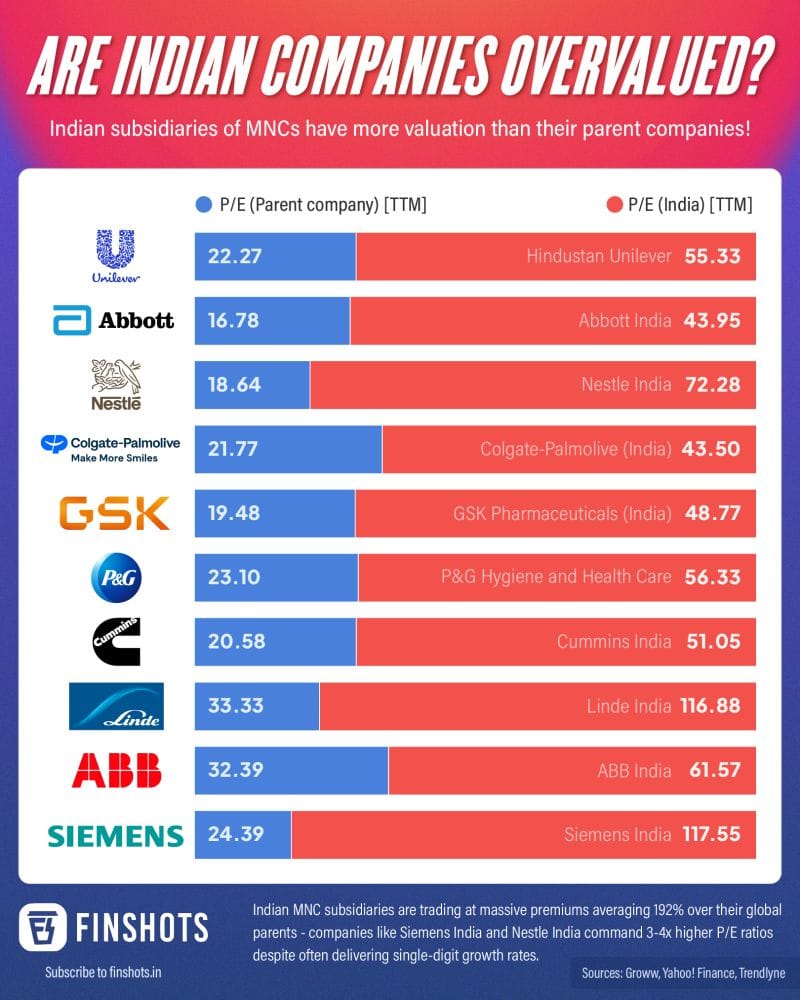🍳Gourmet gucchi, unreadable prescriptions, and more...

Hey folks!
Here’s a serious question for you. How many Fundamental Rights are listed in the Indian Constitution, and what are they?
We’re guessing you know the answer, but saying them all out loud might not come as easily.
So, here’s a quick refresher. There are six Fundamental Rights — the Right to Equality, Right to Freedom, Right against Exploitation, Right to Freedom of Religion, Cultural and Educational Rights, and the Right to Constitutional Remedies.
Now, you’re probably wondering, “Why on earth is a Sunny Side Up edition that’s supposed to be fun, suddenly sounding like a Civics class?”
Well, because a few days ago, the Punjab and Haryana High Court decided to add another right to this list — the Right to a Legible Medical Prescription.
Yup, you read that right.
And if you’ve ever been treated by an Indian doctor, you know exactly what we’re talking about. More often than not, the prescription you walk out with looks nothing short of a mysterious code. It could have a combination of scribbles, loops, or random shapes that only the doctor seems to understand. And trying to make sense of it, is a whole problem in itself.
A study by The National Medical Journal of India found that 20–40% of prescriptions written by Indian doctors are illegible. Sure, it varies across regions and doctors. But let’s be honest. We’ve all stared at one of those indecipherable pieces of paper at least once in our lives.
It might sound funny, but the courts didn’t think so. The Punjab and Haryana High Court ruled that a legible prescription is a Fundamental Right, because it can literally mean the difference between life and death. The Indian Medical Association (IMA) has even advised doctors to write in block letters for clarity.
That’s because an illegible prescription could prove to be deadly for a patient. Pharmacists might misread one drug for another, and while experience helps them guess based on a patient’s health condition and medical history, it’s not foolproof.
Take this for example. Azidothymidine, a drug used to prevent HIV, could easily be mistaken for Azathioprine, a powerful immunosuppressant, if the handwriting’s unclear. And that tiny error could have severe consequences.
But here’s the catch. As the president of the IMA told the BBC, it’s easier said than done. Private doctors who see a handful of patients a day can take the time to write neatly. But government doctors who handle hundreds daily? Not so much.
That’s where electronic prescriptions come in. More hospitals and clinics, especially in cities, are switching to digital systems where doctors type prescriptions into computers or tablets. It ensures that no pharmacist has to play guessing games with a patient’s health. And slowly, even smaller clinics are catching on.
And hopefully, this small but significant change will go a long way, because when it comes to medication, a single misread word or dose can change everything.
Who would’ve thought that doctors’ bad handwriting, something we’ve joked about for years, would one day stir a court’s conscience and turn into such a serious, and much-needed order?
Here’s a soundtrack to put you in the mood 🎵
Burning Till I Fall by Framed In Crimson
You can thank our reader Sakshi Srivastava for this great recommendation!
Now, let’s get cracking.
What caught our eye this week 👀
🍄 The rare mushroom that rises from ashes
Every spring, when the snow melts and the forests of Himachal and Kashmir begin to breathe again, small groups of villagers set out on an unusual treasure hunt. They walk through charred slopes and damp soil, scanning for wrinkled, honeycombed caps pushing through the ash. What they’re searching for isn’t gold or truffles, but it’s gucchi or morel, a wild mushroom so rare that it now sells for up to ₹40,000 a kilo when dried.
And its demand is picking up in India because of rising interest from restaurants and chefs who’re using it as a native luxury ingredient.
But before you imagine fortunes being made, here’s the thing. It takes about 6 to 10 kilos of fresh gucchi to make one kilo of the dried kind. Most foragers sell their haul to middlemen for barely ₹10,000–₹12,000 a kilo, and by the time it’s cleaned, sun-dried, and packaged for export, the same batch fetches triple that amount in fancy stores.
What makes gucchi even more extraordinary is that it refuses to be farmed. Scientists have tried, but it only grows in the wild. Usually after snowfall or, oddly enough, a forest fire. Because when a patch of land burns, the nutrients released in the soil create just the right stress for gucchi to sprout.
Part of its popularity also comes from its health halo, since they’re said to be rich in vitamins B2 and B3, packed with antioxidants, and often linked to better brain and heart health. Add to that its deep, earthy flavour that enhances risottos and pulaos alike, and you can see why it’s becoming a gourmet darling.
India’s gucchi economy now runs into crores each season, with trade and exports mainly headed to Europe and the US. The government of J&K, meanwhile, is pushing for a Geographical Indication or GI tag for “Doda Gucchi” (morels that are native to J&K’s Doda district) to protect its Himalayan identity and ensure fairer prices for foragers. And startups in Uttarakhand are even experimenting with semi-wild cultivation.
China, meanwhile, has already cracked commercial cultivation by growing morels across thousands of hectares using nutrient-rich soil bags. And if that tech takes root here, gucchi’s wild romance might finally meet its farmed twin.
But here’s the thing. This is also a classic mountain story, where the people who climb the hardest paths often earn the least from them. And climate change from unpredictable weather and high temperatures is impacting their availability as well as disrupting the livelihoods of the mushroom pickers. The yield has been low and production has shrunk from 2,000 quintals in 1991 to around 45 quintals in 2021.
Still, there’s something poetic about a mushroom that chooses to grow only under certain conditions. In a world obsessed with instant growth and perfect control, it’s a quiet reminder that beauty sometimes comes from what survives in nature, not what avoids it.
And if you’re intrigued, here’s a recipe of these mushrooms to check out: Kashmiri Gucchi - Morel Mushroom Curry by Food for the Soul.
Infographic 📊

📺Why more money doesn't mean more wealth
India’s middle class is stuck in a “wealth trap” despite earning more than ever.
A software engineer earning ₹20 lakhs annually has a negative net worth of ₹3 lakhs, while his father, a retired bank clerk earning ₹6 lakhs a year, has a net worth of ₹2 crores. How does this happen?
From rising salaries to skyrocketing expenses, debt-fueled lifestyles, and systemic barriers like inflation and taxation, the middle class is facing a growing gap between income and wealth.
So, in this episode of Finshots TV, we dive into the history of India’s economic policies, how easy credit and rising costs have created this trap, and why wealth isn’t staying in the family. Click here to check it out.
Readers Recommend 🗒️
This week, our reader, Divyank Agarwal recommends reading The Goal by Eliyahu Goldratt and Jeff Cox.
It’s a novel about a plant manager who’s growing increasingly desperate to turn things around at his factory. His plant is heading straight for disaster, and nothing he tries seems to work. That’s when he begins to question what the real purpose of his plant actually is. And in the process, he uncovers something surprisingly simple — that the ultimate goal of any business isn’t to cut costs, boost efficiency, or expand headcount, but to make money.
Thanks for the rec, Divyank!
That’s it from us this week. We’ll see you next Sunday!
Until then, send us your book, music, business movies, documentaries or podcast recommendations. We’ll feature them in the newsletter! Also, don’t forget to tell us what you thought of today's edition. Just hit reply to this email (or if you’re reading this on the web, drop us a message at morning@finshots.in).
🖖🏽
Don’t forget to share this edition on WhatsApp, LinkedIn and X.
